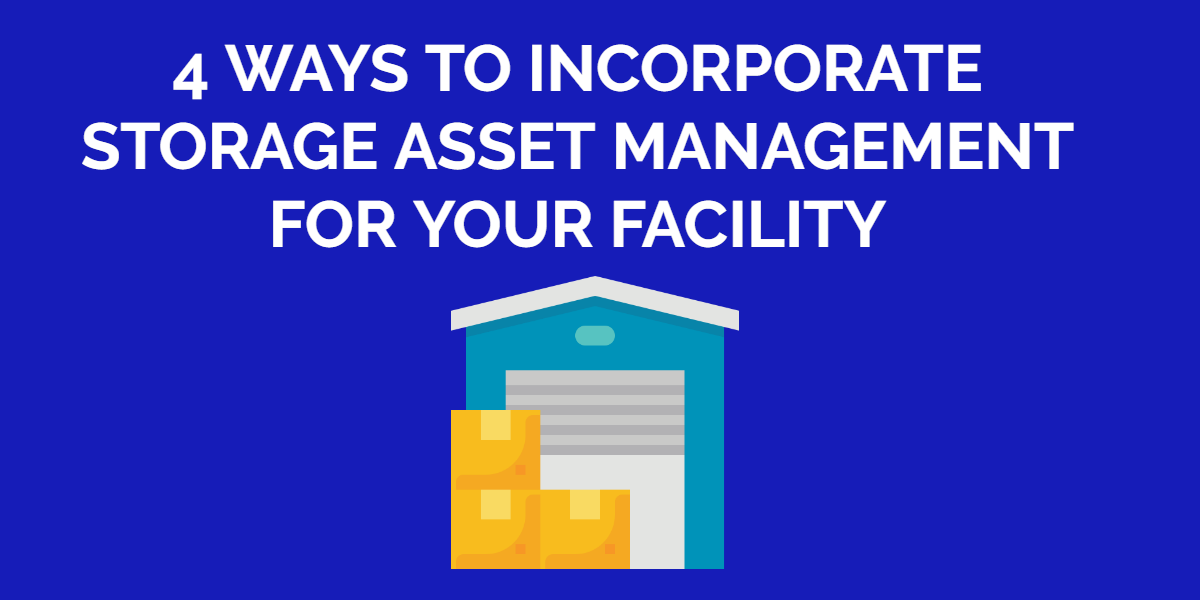
Companies are aware that they need proper storage facilities for the inventory while it is not being used. However, not all of them are implementing the measures they should take to ensure their assets are stored efficiently. If you don’t figure out a way to store smartly, then there’s a chance that you might end up wasting time in locating, maintaining, and replacing the assets when you need them.
The solution: A fixed asset management system that can easily provide real-time information about what is available in your storage, and what condition it is in.
What is asset management for storage facilities?
The item you order online on a one-day delivery scheme would never come to you that fast if there are no storage facilities. This is why modern companies increasingly have a deep dependency on storage facilities for their day-to-day operations. For example, any business that deals in e-commerce, distributing physical assets, to even agriculture for storing their off-season produce, requires a storage facility.
Storage asset management refers to the process of tracking and maintaining physical assets and equipment in the storage facility. Facility assets typically include computers, machinery, vehicles, and furniture with management required for the following :
- Rigorous fixed asset management
- Item reservations
- Payment tracking
- Live dashboards to track daily operations
Why does your storage facility require an asset management system?
The key to any successful business is to invest in the right tools and equipment at the right time and more importantly, use and store them efficiently. If the asset management at your storage facility is not up to the mark you’ll end up with skewed numbers in the record and confused employees. And these two aspects are enough to divert a business from a successful path.
A robust asset management system will automate and streamline procedures for better business outcomes.
Also, you don’t have to worry about servers and storage because most of these software are cloud-based. This means your information is secure and you are protected against unauthorised breaches.

Here are some of the features of a fixed asset management system that can boost the overall performance of your storage facility:
- Strict vigilance of storage assets by using the recorded check-ins and checkout
- Barcode scanning allows you to track asset locations and other details conveniently
- Track the complete lifecycle of an asset and also easily calculate depreciation
- Reduce operational downtime by using recurring and preventive services.
- Use the availability calendar to prevent conflicting reservations
- Regular audits ensure compliance
4 ways to implement storage asset management
In order to run smooth operations for your storage facility, the key is to automate as many of the daily processes as possible. Doing so will not only improve efficiency but also staff productivity by eliminating the need for manual asset control practices.
Here are 4 ways a storage facility can implement asset management to boost functionality through optimized operations:
1. Secure your assets
With asset management software, you can track your assets and ensure that they are secured and well maintained. Also, by adding an electronic signature feature into the asset ID, you can control who gets access to the assets and track who used the item most recently. So, if significant damage or theft gets reported, you always know who to look for.
Asset misplacement is quite common when you’re working with a considerable number of people. According to data collected by the FBI’s Uniform Crime Reporting (UCR) Program, there were an estimated 7,196,045 property crime offences in the US in 2018 alone, resulting in losses estimated at $16.4 billion. Using an asset management system, you can tag assets with unique asset barcodes or labels. Now all you have to do is scan the asset label to get all the information you need including:
- The manufacturing date of the asset
- The name of the company from which it was purchased
- Cost of the asset
- Location tracking
- Asset’s shelf life
- List of individuals whom it was allotted

2. Increase ROI
You need to know the exact figures and data to determine the usability and profit margins of an asset. So, if all this calculation is done pre-handed, you can quickly choose the precise way you need to use the aid. The data that is delivered immediately after it is collected is called real-time data. There is no delay in the timeline of the information provided. Storage asset management systems must operate on real-time computing.
The data in the software should also be available for trends analysis. Real-time reports and graphs allow you to take required actions instantly to have full control of the company’s assets. And with that data, you can create audit reports that accommodate the auditor’s opinion after examining the financial statements of the organisation.
The audit reports include everything from financial statements, to management accounts, to management and complaint reports. These reports are generated annually to help the board of directors and stakeholders in maintaining the transparency of financial reports. The data and analysis cumulatively help in understanding how you can increase the ROI of your business.
3. Boost operational efficiency
For a business to operate regularly, they need efficient operations and machinery or equipment failure can lead to delays and backlogs. So, to avoid that, look at the data of disposal dates of assets and make a list of items that need to be upgraded. This kind of insight can be generated and planned with the help of storage asset management software.
Also, easily implement preventive maintenance to avoid unexpected delays or hold-ups in operations. This practice helps save time and money and ensures you are making optimal use of our machinery and equipment.
4. Streamline financial management
The depreciating value of assets can help an organization save a lot on taxes because tax authorities treat the depreciating value as tax deductions. But to show all this in your balance sheet and accounting statement, you need well organized data. That can be quickly done with the automated depreciation management feature of an asset management software. Here are the aspects depreciation management counts on:
- The useful life of an asset
- Scrap value of an asset
- Method and rate of depreciation
Depreciation is an accounting process which a company uses to calculate the declining value of an asset. When a financial statement is made, depreciation expenses are always included to distribute the amount which the asset has acquired in a financial year. In fact, you can even scan and upload the purchase order image of every bill in the system, so that during accounting if required, you can re-check bills anytime. The information is stored in a centralised way in asset management software which includes information like maintenance schedules, purchasing cost, and the track of its locations.

Data is always a driving factor in the growth of businesses. If you are scaling up, you need to ensure that you are organised with efficient methods to keep a record of your assets.
By using a fixed asset management system, you can drive the data processes using automated and updated real-time information. Among the other benefits, the asset management system generates various analytical reports to help you keep things on the right track.






